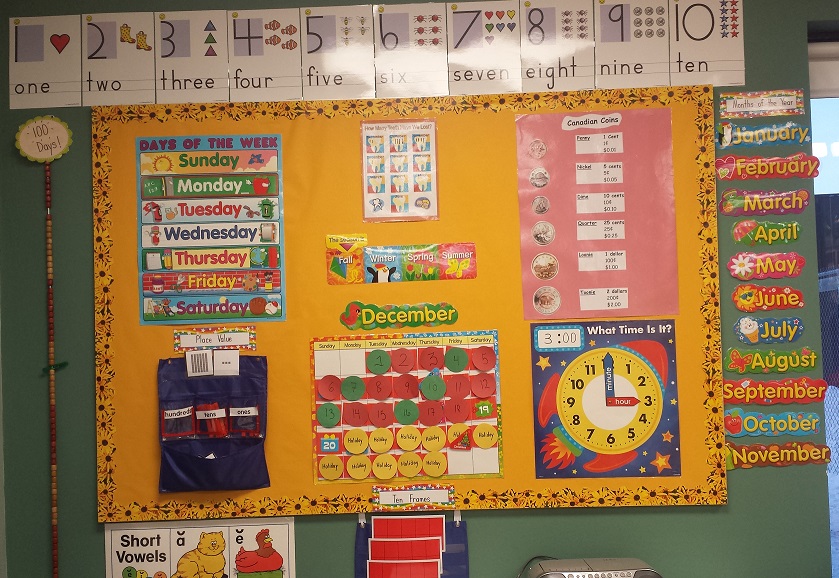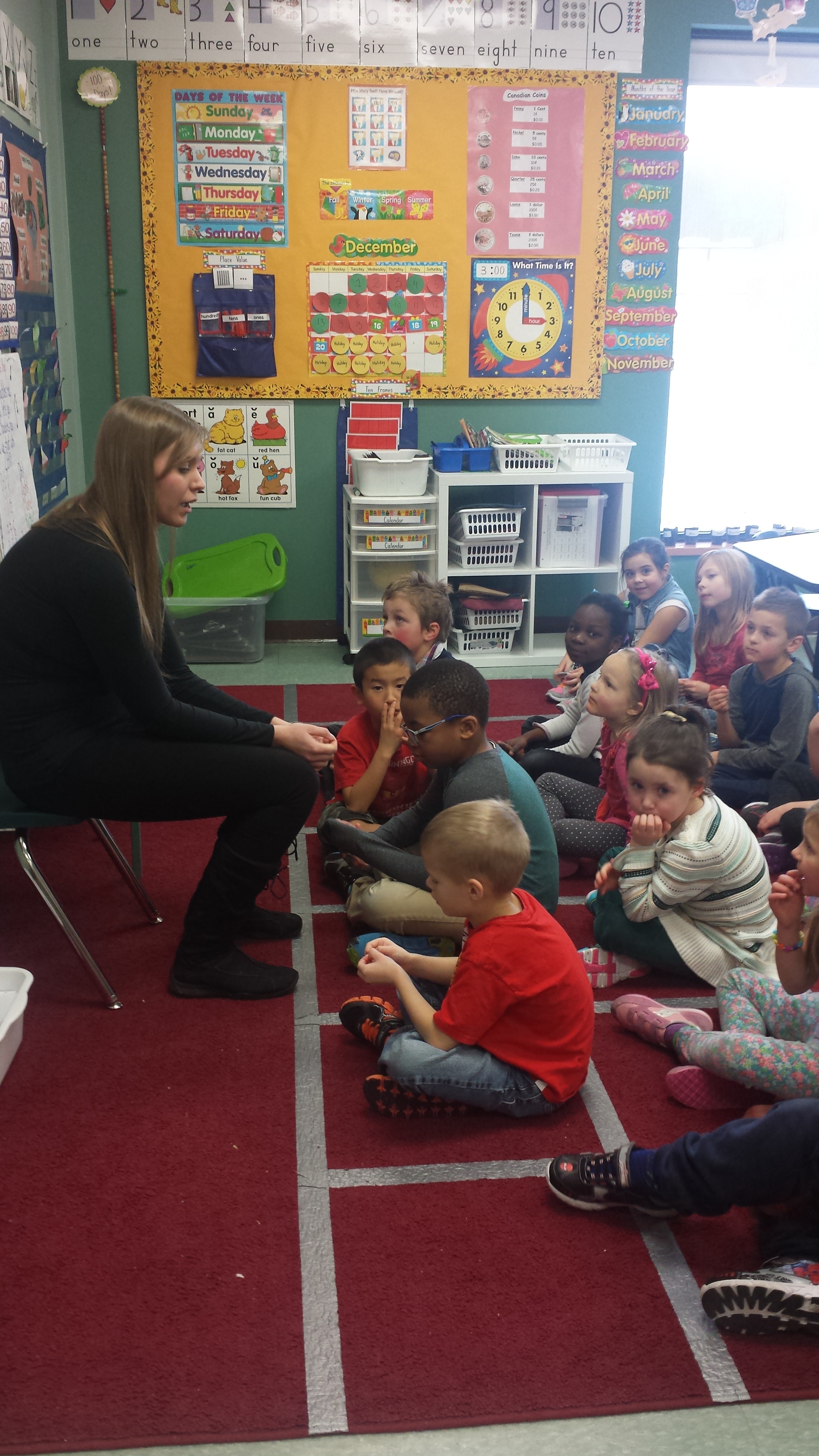Math is one of those subjects that some students will absolutely love, and others will dread unfortunately. My goal is to have all students become engaged with math! I do this through instruction, math games, math manipulative’s such as unfix cubes and dice, class discussions, whiteboard math demonstration and example, student volunteers to answer questions, and connecting math to other subject areas such as art! I also make sure to be prepared for all types of learning abilities by creating differentiated lessons. Here are some ways I teach math to children, and what I would like to incorporate into my future teaching regime.
1.) For younger students, Calendar.

This was a great method I learned from my CT. I practiced it with the students as well almost each day I was in practicum. This helps with students in their number counting, recognizing the days of the week, patterns and relations with colors, months of the year, and counting up by 2’s, 5’s, and 10’s. This would be used in younger grades, most likely K-2.
————————————————————————————————————————————————————————
2.) Teacher-Led Math Instruction

There is absolutely no way around it. Math is a subject that needs a teacher leading the concepts that students are being introduced to. I know this first hand. When I went to a self-taught high school, I needed to take math in the summer classes because it is really hard to teach it to myself without any teacher help.
————————————————————————————————————————————————————————
3.) Math Groups and Stations

Once the students have been taught the mathematical concepts, having math stations is a great way to keep students engaged! Whether this include math games, math work sheets, guided math, math journals, or math with technology- there are many ways that students can be exposed to math.
Note: With math games, this could include relevant board games, bingo, using a computer and doing computer games that are relevant, card games, and dice games.
————————————————————————————————————————————————————————
4.) Student participation on the whiteboard/SMART board

To keep students engaged, it is important to have them volunteer and participate with answering questions in front of their peers. The incentive will be to answer correctly, which pushes students to want to listen more closely.